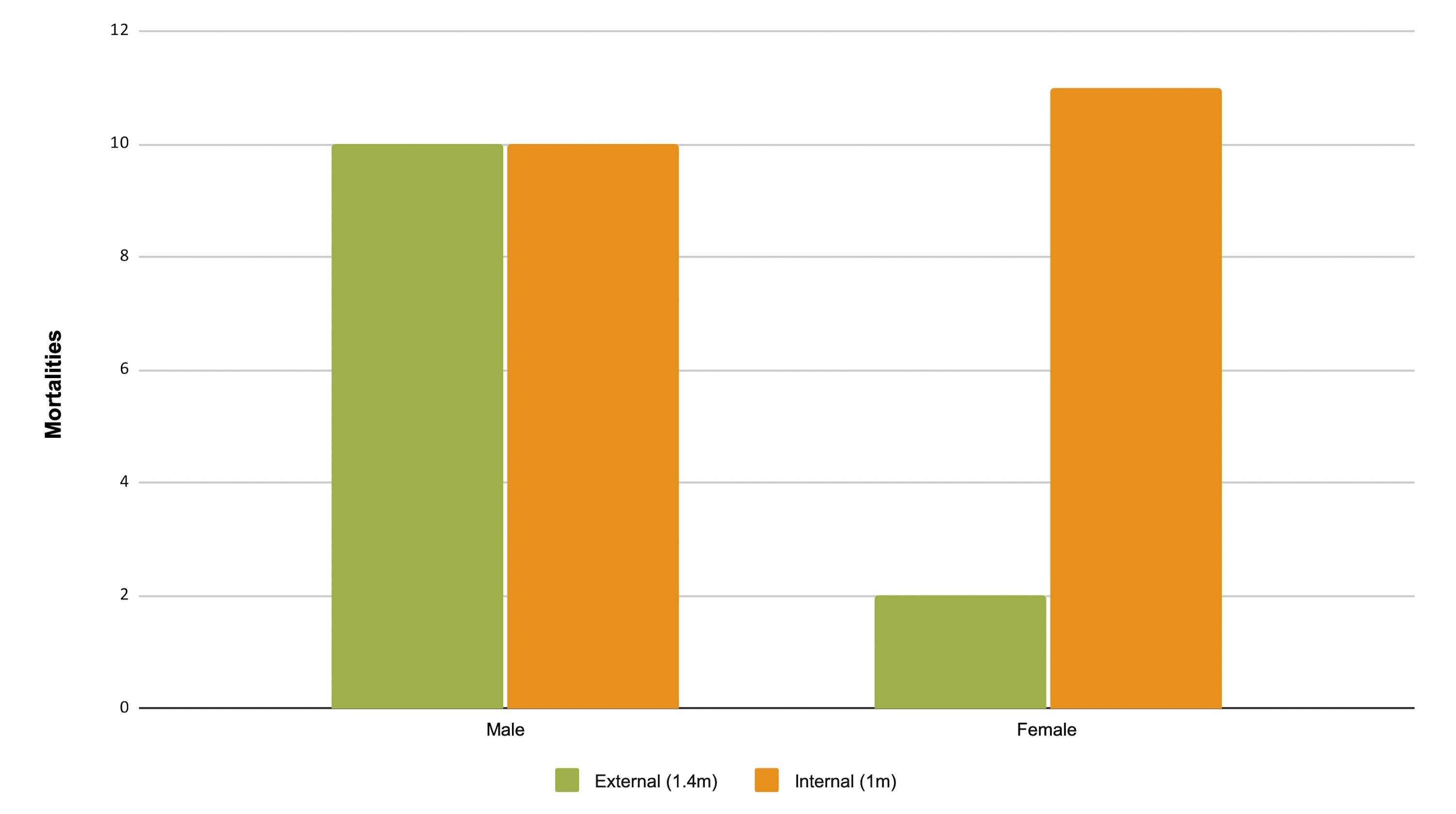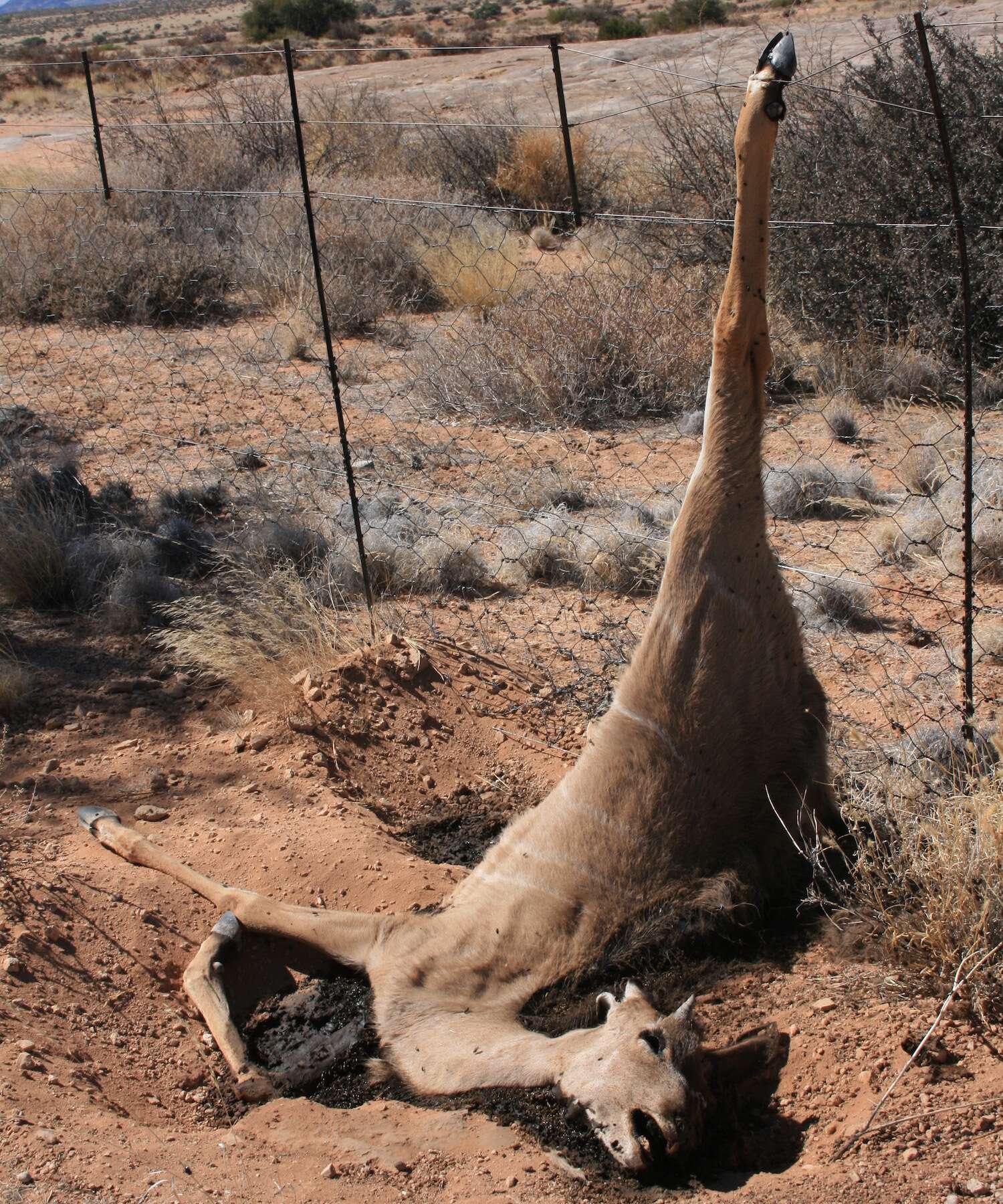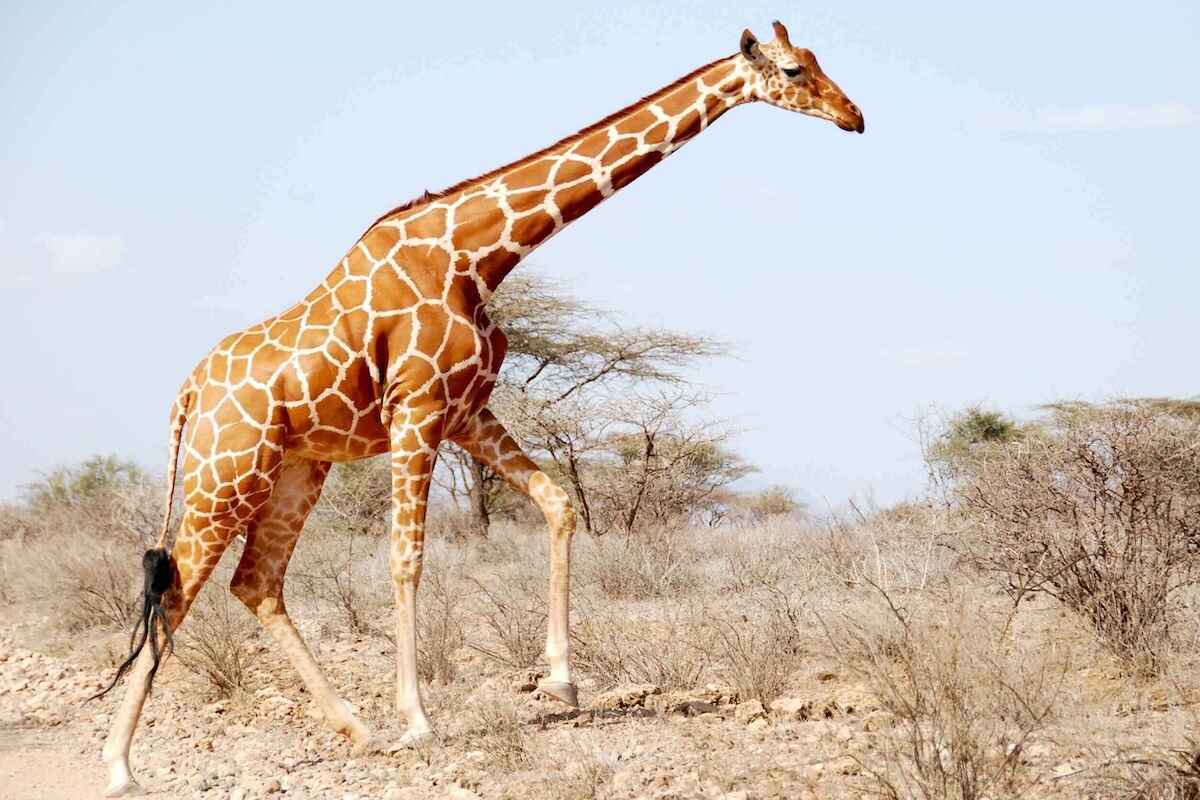
Ensnared
Livestock fences can be deadly traps for springbok in southern Namibia
29th October 2024
29th October 2024
Namibia’s freehold farming areas are criss-crossed with fences. The shorter fences are designed to manage livestock movement, while higher ‘wildlife-proof’ fences prevent jumping antelope species like kudu from escaping. My ten-year study reveals that even short livestock fences can be deadly to springbok that try to jump over them in search of greener pastures.
Southern Namibia is predominantly a sheep-farming area, where farm boundary fences are used to keep predators out and sheep in, while internal fences are used to manage sheep grazing movements. Some farmers electrify strands of the boundary fence and use mesh fencing in addition to the normal strand wires in an effort to prevent jackals from entering the farm and preying on sheep. Electrification is known to kill a variety of small animals such as chameleons, monitor lizards, tortoises, pangolins and snakes.
Livestock fences and springbok
Even without the electrified strands, fences restrict the natural movement of springbok and gemsbok, which do not jump over low fences as easily as kudu and eland do. Although the farms in southern Namibia cover large areas (often more than 10,000 hectares), desert-adapted antelope move over much larger areas in search of grazing. As they move through farmlands, they encounter fences that must either be avoided or jumped – the latter may result in death.
Having encountered dead springbok along fence lines in southern Namibia, I wanted to know how many springbok died, whether males or females were more likely to die on fences, and whether or not the rate of death was affected by rainfall and seasons. I therefore started recording springbok deaths along the boundary and internal fences of our farm south of Grünau in January 2015.
During the ten years since then, up until August 2024, I recorded the deaths of 20 male, 13 female and one young springbok. Besides springbok sex and date, I recorded the type of fence that caused the death – either the 1.4m high 6-stranded boundary fence, or 1m high 7-stranded internal fences.
Half of the male springbok deaths were caused by the high boundary fence, while 11 of the 13 female deaths were caused by the lower internal fences. This suggests that female springbok rarely attempt to jump the boundary fences, while the males attempt and fail on both the internal and external fences. I have watched springbok avoid jumping over pipelines as low as 70cm; it seems that all livestock fences are a challenging ‘high jump’ for springbok.

Seasons and annual rainfall affect death rates
The rainy season (December to March) proved more deadly for male springbok (three deaths per month) than the dry season (one death per month). Rainfall is extremely patchy in southern Namibia, as it mostly comes in the form of localised thunderstorms that drench one area while leaving adjacent areas virtually dry. Under natural conditions with no fences, springbok instinctively move towards patches that have had recent rainfall. While most female springbok seem to stop at 1.4m at farm boundary fences, males are apparently more likely to attempt the jump and subsequently get caught in the top strands. It is also possible that male springbok attempt to jump fences to fight with other males in territorial battles.
A small spike in female deaths during the winter months – three in July and two in August – is somewhat harder to explain. I suspect that the scarcity of food at this time of the year is driving springbok to cover more ground to meet their dietary needs, which will bring them into contact with fences more often. Females may need to eat more than males due to the toll that pregnancy and lactation takes on their bodies, causing them to attempt jumping the 1m internal boundaries if necessary.

In the ten years covered by my survey, the highest annual death rate was seven springbok, recorded in 2019 and 2023. Those years were characterised by extremely low rainfall, with only 16 and 17 mm respectively (the average for the 10-year period was 60 mm per year). This suggests that springbok are especially desperate to find new grazing areas during such a time and are less likely to clear the fences in their weakened state. In good years, the springbok will be more likely to stay where they are and, even if they do attempt to jump the fences, will be more likely to clear the fence without being caught.
Besides the obvious effect of rainfall on springbok deaths, some deaths in fences may be related to predators, or humans and vehicles. Springbok may attempt to jump fences to escape real or perceived danger.
Consequences for springbok conservation and management
Is the springbok population in southern Namibia negatively affected by fence-related deaths? To answer this question, it is important to put the recorded deaths into context. Springbok numbers can increase by 40% in a year of good rainfall. I estimated that fences on our farm caused the death of about 10% of the springbok that occur here.
Fence-related deaths are therefore unlikely to cause a population decline in normal years, although years of bad rainfall lead to more fence deaths and lower reproduction rates. Farmers who aim to maintain stable springbok populations on their farms should factor in possible fence-related deaths when estimating hunting off-takes for their farms.


Following my observations of how springbok get caught in fences, I have some suggestions for slight changes in fence design to reduce the death rate. The top two steel wire strands frequently trap the springbok’s leg as it goes over the fence (see photo above). For internal fences, I suggest setting the strands further apart – 300 mm rather than 200 mm – to reduce the chances of a springbok’s leg being caught between the top two strands. On higher boundary fences, the top three wires are typically 100 mm apart. Decreasing this gap even further, to 50 mm, may make it less likely for the leg to get between the strands in the first place.
A simpler option that will help in some cases is for farmers to leave camp gates open when no domestic livestock are present, so that springbok can move between camps without having to jump internal fences.
The records I collected for the past ten years helped me to determine the scale of the problem, while my observations of how the springbok were caught have led to some thoughts about how to improve fence design. I encourage other farmers to do the same. Record every dead springbok, including the sex and date, that you encounter while inspecting your fences, along with a photo that shows how it was caught (if possible). If you change your fence design, keep monitoring to see if it made a difference. Finally, use your records to determine the impact of fences on your overall springbok population and adjust your hunting off-takes accordingly.

For articles on similar topics, please click one of the following options:
For more great articles from Conservation Namibia see below...
Conservation Namibia brought to you by:
We use cookies to monitor site usage and to help improve it. See our Privacy Policy for details. By continuing to use the site, you acknowledge acceptance of our policy.











